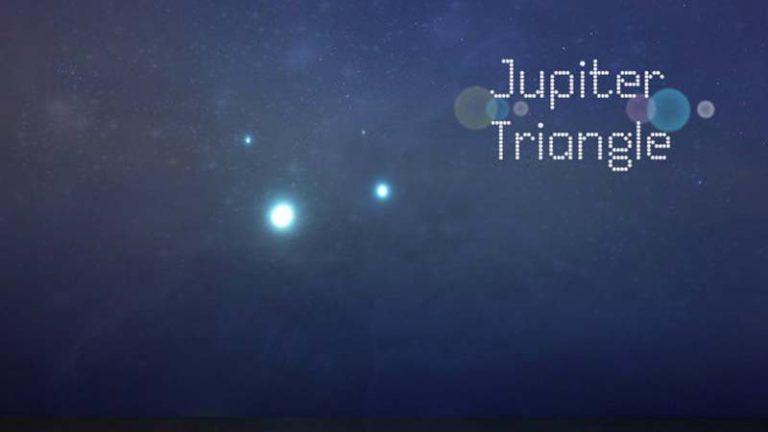We’re never short of reasons to look up at the night sky – whether it’s the rare second blue moon we were just treated to, or a meteor shower.
But in case you need a little motivation to get out of the house and into the fresh air this month, we have a beautiful one for you: checking out the ever-changing celestial geometry above our heads.
This April, the gas giant Jupiter forms a rare and fleeting triangle with two bright stars in our night sky, and it’ll be visible with the naked eye if you know where to look.
 Joe Rao, astronomy lecturer at New York’s Hayden Planetarium and columnist over at Space.com, is calling this ‘Jupiter’s triangle’, seeing as Jupiter is the brightest point – and it’s visible from April to September.
Joe Rao, astronomy lecturer at New York’s Hayden Planetarium and columnist over at Space.com, is calling this ‘Jupiter’s triangle’, seeing as Jupiter is the brightest point – and it’s visible from April to September.
So what are you looking for? The triangle is roughly isosceles in shape, and is made up of the stars Arcturus and Spica along with the main attraction, Jupiter.
Arcturus is the fourth brightest star in the night sky and is a relatively close 36.7 light years away from our Sun.
Spica is actually a binary system – a system with two stars – but at a distance of 260 light years away from Earth it appears to us as a single bright point of light.
You’ll be able to see the triangle from around 11pm local time looking east-southeast. No gear is needed, but if you have a set of binoculars or telescope, that’s not going to hurt.
The triangle will remain visible throughout the night. Here’s how the triangle looked in May last year:
Rao provides some more detail for those stargazing from the Northern Hemisphere:
“This Triangle appears to point toward the northeast, with the brilliant yellow-orange star Arcturus (magnitude –0.1) at the vertex. The bluish star Spica (magnitude +1.0) and the brilliant planet Jupiter (magnitude –2.4) forms the bottom of the Triangle. The Arcturus-Jupiter and Arcturus-Spica sides of the Triangle measure about 38 degrees in length, while the Jupiter-Spica side is about 30 degrees long.”
A handy tip is that your clenched fist held at arm’s length measures roughly 10 degrees in width.
What’s cool is that Jupiter’s triangle will be continuously changing shape throughout the month as Jupiter moves in our sky.
Until July 11, Jupiter is moving in retrograde, which means it appears to be shifting towards Spica (and no that retrograde isn’t going to ruin your life).
By July 11, the star and the planet will appear to be just 20 degrees apart, giving the triangle a narrow appearance.
But after that, Jupiter will change direction and will gradually get further apart from Spica in our sky.
“Finally, during mid-to-late September, Spica will become too deeply immersed in the sunset glow to be seen. Jupiter itself will disappear into the sunset glow by early November,” writes Rao over at Space.com.
We won’t see this same triangle appear in our skies again until 2030, so make sure to grab a blanket and get outside to enjoy it while you can.
As always, try to find a dark spot away from light pollution, and give your eyes time to adjust to the dark before you start gazing.
There’s nothing quite like staring up at the movements of the largest planet in our Solar System to make all the world’s problems seem far away, if only for a little while.
Via ScienceAlert
If you liked this post share it with your friends and family.
You may also like:




0 Comments